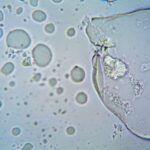Seasonal Allergies and How Antihistamines Work to Treat Them

As Spring rolls around, people who live with seasonal allergies may find that their symptoms begin to return. The pollen count tends to increase, leading to symptoms like sneezing, itchy eyes, and runny nose. Seasonal allergy symptoms can make you feel fatigued and even downright miserable. Fortunately, there are steps you can take to make life more manageable, including taking an antihistamine medication.
What Are Antihistamines?
Antihistamines, as their name might suggest, block the activity of histamines, a molecule that tells the cells to perform certain processes, such as making stomach acid. Histamine also plays a role in the immune system, working to protect the body from foreign invaders. When a person comes into contact with allergens, histamine causes an overreaction in the body, leading to symptoms like congestion. Since antihistamines block histamine activity, they can treat allergy symptoms.
What Causes the Body to Release Histamines?
Histamines cause an allergic reaction, because they perceive allergens to be a threat. This causes blood vessels to swell, ultimately leading to allergy symptoms. People who have seasonal allergies have an overreaction to allergens within the environment, whereas people without seasonal allergies do not experience the same symptoms (sneezing, runny nose) in response to allergens.
Some common causes of histamine release, and allergy symptoms, include certain foods, dust, pollen, mold, pet dander, and latex. Seasonal allergies are often linked to pollen and mold. While antihistamines are often used to treat seasonal allergies, they can also be useful in the case of an allergic reaction to something in the environment, such as dust. People may also use antihistamine drugs to treat hives, rashes, food allergies, and insect bites.
Types of Antihistamines
There are two types of antihistamines: H1 blockers which treat allergies, as well as H2 blockers, which are utilized to treat gastrointestinal conditions like acid reflux and ulcers. Within the class of H1 blockers are first-generation antihistamines, which are known to cause drowsiness, and newer second-generation antihistamines, which have a lower risk of causing drowsiness.
Some common first-generation antihistamines are as follows:
- Benadryl (generic name diphenhydramine)
- NyQuil (generic name doxylamine)
- Vistaril (generic name hydroxyzine)
- Dramamine (generic name dimenhydrinate)
The following are second-generation antihistamines:
- Claritin (generic name loratadine)
- Allegra (generic name fexofenadine)
- Zyrtec (generic name cetirizine)
While newer, second-generation antihistamines came out in the 1980s, first-generation antihistamines remain on the market.
Antihistamine Side Effects
Antihistamine drugs are used because they provide relief from seasonal allergies, but that doesn’t mean they are without side effects. The side effect profile can vary between different types of antihistamines, but there are some general side effects that you can expect.
Some common side effects that are seen with first-generation antihistamines like Benadryl include:
- Drowsiness
- Dryness in mouth/eyes
- Blurry vision
- Headaches
- Dizziness
- Low blood pressure
- Constipation
Second generation medications may come with slightly different side effects:
- Stomach pain
- Fatigue
- Headache
- Sore throat
- Coughing
- Nausea/vomiting
If you are concerned about side effects, it is important to look at the labels on medications, including those that are purchased over-the-counter. Sometimes formulations used to treat cold and flu may contain an antihistamine medication. If you regularly take an antihistamine for allergies, and then take a cold medication, you may unknowingly ingest an additional dose, which can worsen side effects. This can be especially problematic if you take too large of a dose of an antihistamine that produces drowsiness.
Choosing an Antihistamine
There are several different formulations of antihistamines, many of which are available over-the-counter. They come in the form of syrups, liquids, capsules, and tablets. For rashes and skin allergies, there are antihistamine creams available.
When choosing an antihistamine for seasonal allergies, it may be best to consult with your doctor to determine the best medication for you and to ensure that the selected antihistamine will not interact with any other medications you are taking.
If you are comfortable selecting an antihistamine on your own, it is helpful to read labels for the various antihistamine drugs, as the label will contain a list of uses of the drug. If a drug label indicates that it can be used to treat seasonal allergy symptoms, it is probably a suitable choice. Some medication manufacturers may refer to seasonal allergies as “hay fever” or “allergic rhinitis.”
Prescription Antihistamines for Seasonal Allergies
Many people do find that seasonal allergy symptoms are relieved with over-the-counter antihistamine drugs, but some patients may benefit from taking a prescription medication. If you have severe seasonal allergies, your doctor may prescribe one of the following antihistamine medications:
- Clarinex: A medication taken by mouth
- Astelin: An antihistamine nasal spray
- Optivar, Elestat, or Patanol: All eye drops
Prescription antihistamines can provide relief if you do not respond to over-the-counter medications. Talk to your doctor to determine if you might be a candidate for a prescription antihistamine.
How to Take Antihistamines
Antihistamine medications should be taken using the dosing descriptions on the medication label. If you are taking a prescription, follow the instructions of your doctor or pharmacist. Do not be afraid to ask a pharmacist how to take an antihistamine medication, even if it is over-the counter.
Be sure to carefully read medication labels. Do not exceed the recommended dose, and be sure that you are not taking multiple products that contain antihistamines, as you might unintentionally exceed the maximum dose and increase your risk of side effects like extreme drowsiness.
The Bottom Line on Antihistamines
Antihistamines can be incredibly helpful if you live with seasonal allergies, as they can reduce the effects of unpleasant symptoms like constant sneezing and itchy eyes. If you regularly struggle with seasonal allergies, you might find that you need to take an antihistamine daily. On the other hand, some people may be able to take antihistamines only as needed, when allergy symptoms flare up. Your doctor can help you to determine the best dosing regimen for antihistamines and seasonal allergies.
Sources:
- https://www.yalemedicine.org/conditions/seasonal-allergies
- https://medlineplus.gov/medlineplus-videos/histamine-the-stuff-allergies-are-made-of/
- https://my.clevelandclinic.org/health/drugs/21223-antihistamines
- https://www.mayoclinic.org/diseases-conditions/hay-fever/symptoms-causes/syc-20373039
- https://www.webmd.com/allergies/allergy-medications




